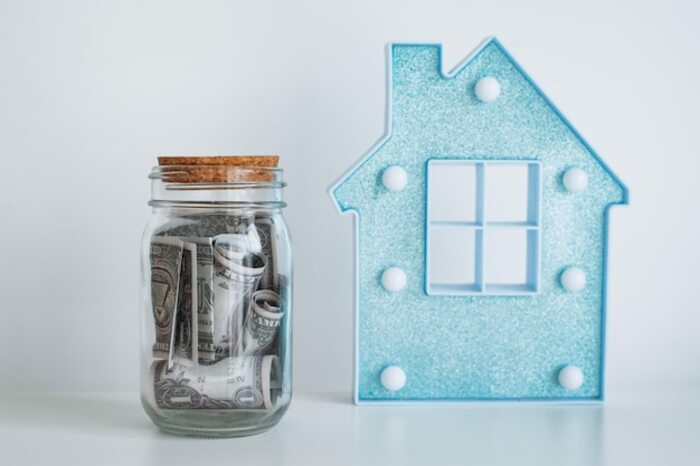Build a bright future: smart savings for housing

Building a bright future for your home begins with a smart decision: saving. In this article, we will explore how to plan and manage your finances effectively to achieve that dream of homeownership. Whether you are looking to buy, renovate, or simply improve your quality of life in your current home, we will provide you with practical strategies and useful tips that will help you maximize your resources. Get ready to take firm steps towards a solid and sustainable financial future.
1. The importance of long-term savings for housing
The importance of long-term savings for housing lies in its ability to provide you with a solid financial foundation that supports your home dreams. Saving not only gives you the necessary capital for the purchase or renovation of your home, but also serves as a financial cushion against unforeseen events. By establishing a consistent savings plan, you can accumulate the necessary resources and avoid relying on high-interest credits or loans, which could jeopardize your economic stability in the future. This approach will allow you to face the investment in your home with confidence and security.
Additionally, long-term savings fosters a mindset of planning and foresight. By dedicating a percentage of your monthly income to a specific savings account for your home, you are not only building a fund but also developing healthy financial habits that will benefit you in all aspects of your life. Discipline in saving can open doors to unexpected opportunities, such as special deals in the real estate market or possibilities for significant improvements to your current home. In summary, cultivating a strong savings habit is essential to ensuring a bright and stable future regarding your living space.
2. Effective Family Budgeting Strategies
The first step to establishing an effective family budget is to identify and categorize all income and expenses. It is essential to have a clear view of how much money comes into the household each month and how it is distributed among different spending categories, such as housing, food, transportation, and entertainment. To do this, a spreadsheet or specific applications can be used to facilitate this tracking. By categorizing expenses, you can identify areas where you can cut costs and redirect those funds toward your savings for housing. Remember that the key is to be honest with yourself about your consumption habits; this will allow you to make realistic adjustments.
Once you have a clear understanding of your financial situation, set specific short-term and long-term savings goals. For example, if your goal is to buy a house in five years, determine how much you need to save monthly to reach that target. Consider opening a savings account dedicated exclusively to this purpose; this way, you will avoid spending that money on other things. It is also helpful to implement the 50/30/20 method: allocate 50% of your income to basic needs, 30% to wants, and 20% to savings and investment. This strategy will not only help you maintain a healthy financial balance but also motivate you as you see your housing fund grow with each monthly contribution.
3. How to establish an emergency fund for unforeseen events
Establishing an emergency fund is one of the smartest decisions you can make when managing your household finances. This fund acts as a financial cushion that protects you from unforeseen events, such as urgent repairs in the home or unexpected medical expenses. To start building this fund, it is ideal to set a specific goal: it is generally recommended to save between three and six months of your monthly expenses. This will provide you with the necessary peace of mind to face any eventuality without affecting your budget allocated for housing savings.
Once you have a clear understanding of the necessary amount, establish a monthly savings plan. You can automate transfers to an account dedicated exclusively to your emergency fund, which makes accumulating money easier without having to think about it each month. Additionally, consider adjusting your daily expenses; small reductions in luxuries or subscriptions can add up significantly over time. Remember that the key is to be consistent and disciplined: even if you start with a modest amount, each contribution will bring you closer to the financial security you need to protect your home and your future dreams.
4. Investment options to multiply your savings
To multiply your savings and get closer to your goal of owning a home, it is essential to consider various investment options that align with your financial goals. One of the most popular alternatives is to open a high-yield savings account, which offers interest rates higher than traditional accounts. These types of accounts allow your money to grow with minimal risk, which is ideal if you prefer to maintain a conservative approach while accumulating funds for a down payment or improvements to your home. You can also explore certificates of deposit (CDs), which, although they require you to keep your money deposited for a specific period, offer guaranteed returns.
In addition to savings accounts and CDs, investing in mutual funds or exchange-traded funds (ETFs) can be an excellent way to diversify your investments and increase your long-term savings. These vehicles allow you to participate in the stock market without having to select individual stocks, which can be risky and time-consuming to research. By choosing a fund that aligns with your risk profile and investment timeline, you could see significant growth in your capital over time. Finally, consider the option of real estate crowdfunding as an innovative way to invest in properties; this alternative allows you to contribute smaller amounts to real estate development and potentially earn attractive returns while helping to grow the housing sector.
5. Benefits of financial education in home buying
Financial education plays a crucial role in the home buying process, as it allows future homeowners to better understand their options and responsibilities. By acquiring knowledge about basic concepts such as interest rates, mortgage terms, and types of credit, buyers can make informed decisions that align with their economic situation. This not only helps them choose the best financing option but also enables them to avoid common pitfalls that could result in long-term financial burdens. A solid foundation in financial education empowers individuals to negotiate better terms and conditions on their loans.
Additionally, financial education promotes more disciplined and efficient saving habits. Understanding how money works and the implications of each expense allows for the establishment of clear goals for saving towards home purchase. By learning about budgeting, investing, and credit management, future homeowners are better equipped to accumulate the necessary capital for a significant down payment. This not only facilitates the acquisition of the desired property but also provides greater financial stability when assuming monthly payments, which is essential for maintaining a healthy and sustainable home in the long term.
6. Digital tools that facilitate savings
Digital tools have revolutionized the way we manage our finances, making saving easier than ever before. Mobile apps and web platforms allow users to keep a detailed track of their expenses and income, which is essential for those looking to build a bright future for their home. Tools like automatic budgets and spending alerts can help you identify areas where you can cut costs, while savings calculators enable you to set realistic goals for your housing project, whether it's buying a house or remodeling.
In addition, there are savings apps that offer rewards for your everyday purchases, thus encouraging more conscious money management. By leveraging these technologies, you can not only visualize your progress towards your financial goals but also find innovative ways to reach those objectives more quickly. By integrating these digital resources into your financial routine, you transform the saving process into a more accessible and motivating activity, ensuring that each step you take brings you closer to your dream of owning a home.
7. Tips to reduce unnecessary expenses at home
Reducing unnecessary expenses at home is a fundamental step towards building a solid financial future. One of the first tips is to conduct a thorough analysis of your consumption habits. Take the time to review your monthly bills and determine what your fixed and variable expenses are. Establishing a budget will allow you to identify areas where you can cut back, such as subscriptions you no longer use or impulse purchases. By having a clear view of your financial situation, you can make more informed decisions and redirect those funds towards savings or investments.
Another effective strategy is to implement savings practices in daily life. For example, consider reducing energy use by using LED bulbs and efficient appliances, as well as unplugging devices that consume energy when not in use. Additionally, planning meals weekly can help you avoid unnecessary purchases and waste. Small changes in your daily routines can accumulate over time, generating significant savings that will contribute to achieving your long-term financial goals.
8. Government programs and subsidies available in Costa Rica
In Costa Rica, there are several government programs and subsidies designed to facilitate access to housing through smart saving. The Instituto Mixto de Ayuda Social (IMAS) and the Ministerio de Vivienda y Asentamientos Humanos (MIVAH) offer different types of assistance that can be tailored to your specific needs. These programs are aimed at both first-time buyers and those looking to improve their housing conditions. By educating yourself about these resources, you can identify opportunities that align with your financial situation, allowing you to move towards your goal of owning a home without compromising your savings.
Additionally, many of these subsidies include benefits such as preferential interest rates or flexible financing, making housing investment more accessible. The key is to research and stay informed about the necessary requirements to access these programs. Do not hesitate to approach local institutions or consult official websites that detail the available options. Taking advantage of these resources can be a decisive step on your path to dignified and sustainable housing, allowing you to build that bright future you speak of with confidence and security.
9. Success stories: Get inspired by local examples
Local success stories are an inexhaustible source of inspiration for those seeking to build a bright future through smart saving. In many communities, we have seen how individuals and families have transformed their lives by setting clear goals and using effective strategies to manage their finances. From purchasing their first home to making renovations that increase property value, these examples demonstrate that with determination and planning, it is possible to overcome financial obstacles. The experiences shared by these local savers offer valuable lessons on the importance of focus and discipline at every step of the way toward the dream home.
Moreover, success stories not only highlight the final result but also the process that led each person or family to achieve their goals. Many started with small changes in their daily habits: from keeping a more rigorous record of their expenses to establishing a specific fund for their housing project. These motivational accounts show that every effort counts and that even the smallest steps can add up to significant achievements over time. By drawing inspiration from these relatable examples, you can find new ideas and strategies adaptable to your own financial situation, reminding you that building a bright future is an attainable goal when approached with dedication and creativity.



